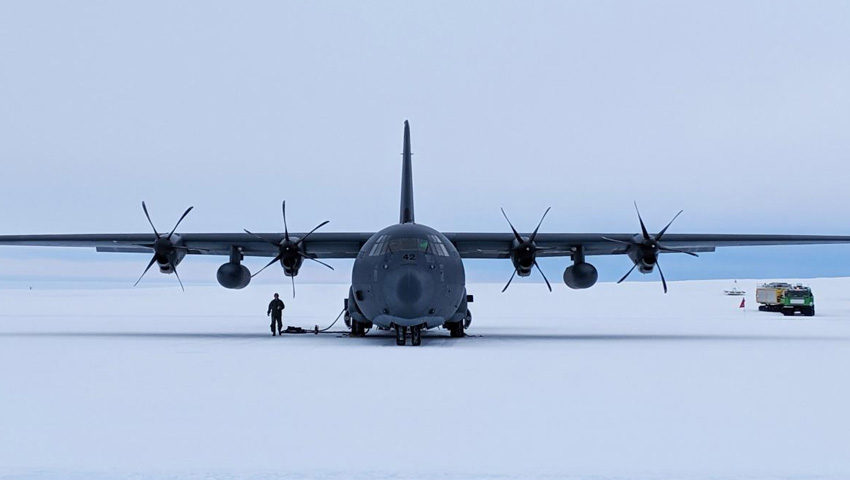A Royal Australian Air Force Hercules transport aircraft has flown to Antarctica for the first time in nearly four decades.
A No. 37 Squadron C-130J Hercules flew from Hobart Airport 1,800 nautical miles across the Southern Ocean to the ice runway at Wilkins Aerodrome on 29 February.
The ultra-long-distance flight required the aircraft to be fitted with external fuel tanks, increasing its fuel capacity from 19 tonnes to 27 tonnes.
The last RAAF Hercules to touch the Antarctic ice was on a mission from Christchurch, New Zealand, to the American station at McMurdo in 1983.
Director of the Australian Antarctic Division, Kim Ellis, said the flight south to the 3.5 kilometre ice runway took about 7.5 hours.
“The Hercules delivered 780 kilograms of cargo to Australia’s expeditioners at nearby Casey research station, and demonstrated the ability to carry a larger load if required,” Ellis said.
“This is another great capability the Australian Antarctic Program now has to reach our stations, deliver cargo and provide medical support to our people working in Antarctica.”
Commander Australian Contingent for Operation Southern Discovery, Wing Commander Dion Wright, said the flight was one of the longest-range missions undertaken by an Australian C-130J Hercules.
“Using the C-130J provides additional capacity for the RAAF to support the Australian Antarctic Division rather than by relying on the C-17A Globemaster alone,” WGCDR Wright said.
On 27 February, a C-17A delivered a tractor and critical station equipment to Wilkins.
This included a Ground Power Unit to support the Airbus A319 transport operated by the Australian Antarctic Division, and runway grading equipment.
It returned with eight pallets of cargo and 23 passengers.
On 29 February, a second C-17A mission brought another tractor to Wilkins, and returned to Hobart with eight pallets of cargo and four passengers.
Since 2016, Air Force C-17As have provided airlift support to the Australian Antarctic Division, making up to six flights over the summer season.








